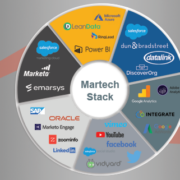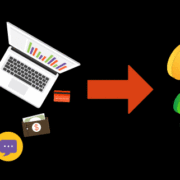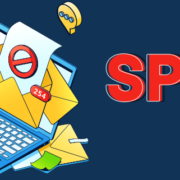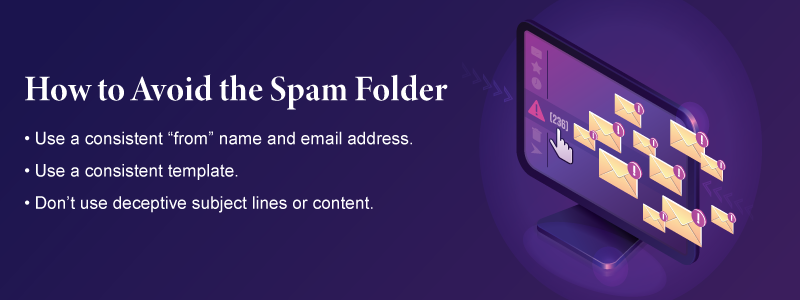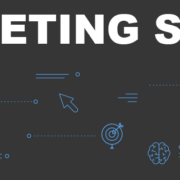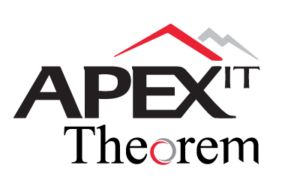Your Martech Stack. Too Hot, Too Cold, or Just Right?
/in Marketing/by James LuckWhether you are in IT or a marketer of your organization, it is essential to evaluate if you have the right Martech stack to ensure a successful digital marketing strategy. Your final decision may ultimately determine whether your brand’s growth potential will be hindered, remain stagnant, or met with explosive success. With such an important decision comes major responsibility in being able to properly select the right FitTech stack—one that won’t leave you feeling too hot (overwhelmed) or too cold (unmet goals). Get ready for this guide as we will explore how you can identify your perfect StackFit!
Understanding Martech Stack Basics
Understanding the basics of a Martech stack is key to being able to effectively assess whether or not it can provide you with the services that your business needs. A Martech stack comprises all of the systems, applications, and data sources needed to coordinate the technology used in marketing operations. It is important to ensure that your firm’s requirements are well-understood before investing in a Martech stack as it should reflect elements that support your desired outcomes. Elements like:
- Ensuring successful marketing acquisition and explosive growth potential for your brand.
- Maximizing your customer engagement with a marketing nurturing solution that allows you to keep track of user behavior and respond in real-time.
- Investing in technologies that optimizes your retention strategy to promote customer loyalty and increase repeat purchases. Retention tactics can include personalized messages, exclusive discounts, reward programs, and other incentives that encourage customers to stay engaged with your brand.
To determine if your Martech stack is right for you, take some time to consider the features each system has and how they fit into what your company is looking for. Doing so sincerely and thoughtfully can help generate tangible results.
Identifying Your Company’s Needs

– Security and Privacy: Companies should look for a Martech stack that includes features to protect customer data and information from unauthorized access, as well as measures to ensure compliance with industry regulations.
– Scalability: Is the Martech stack able to meet your current needs, but also be easily scaled up or down for future growth?
– Automation: Automation can greatly reduce the amount of manual labor and operational costs incurred to complete tasks. Look for a Martech stack that automates processes such as lead capturing, data integration, and campaign management.
– Analytics: A Martech stack should provide reporting capabilities that enable you to measure and analyze performance metrics such as
Matching Solutions to Your Business Goals
Finding the right Martech stack to support your business can be a daunting task. It’s important to assess which solutions are the best match for your specific organizational needs and objectives. The most successful deployments come from aligning integration efforts with business goals. Doing this means understanding what each solution is designed to do, the responsibilities of departments and individuals, and how data is shared across different systems. Once you have a firm grasp on your organizational structure and what it needs, you can begin to assess potential tech solutions that can help achieve desired outcomes. By ensuring the Martech stack is tailored to your organization’s unique needs, it will be better positioned to deliver results that exceed expectations. Things to consider when you dig in and look at your marketing program and your stack:
- What advantages can be gained from utilizing a marketing nurturing solution that allows for real-time responses to customer behavior?
- Can my stack facilitate a single view of the customer across all marketing channels and operations in order to effectively optimize user engagement, retention, and loyalty?
- Can my stack help me create and measure personalized campaigns that will drive customer conversions?
- What potential advantages can be gained by deploying Artificial Intelligence (AI) technologies in the marketing operations of a business? How do these benefits compare to more traditional methods of marketing, and what considerations should be taken into account when considering AI-driven solutions?
Advantages and Disadvantages of Using Different Platforms
Deciding which platforms to use in your Martech stack can be challenging. There are a few key factors to consider when evaluating different options: cost, time spent implementing and maintaining the platform, user adoption, resource scalability and potential feature integration. Keeping in mind such considerations as reducing cost and saving time, choosing the right platform can help ensure a successful deployment and use of resources. With the right decisions, you’ll have the capabilities to achieve better results by driving user adoption with tools that are easy for end-users to start using. Augmenting different platforms is also an option; this allows you to extend existing system capabilities while keeping scale resources low and avoiding redundant service fees. Ultimately, investing enough effort into researching what will work best for your organization pays off in both short-term as well as long-term success.
Evaluating Price Points and Costs Over Time

- Is your stack allowing you to be proactive, staying ahead of the market by leveraging the latest strategies and solutions to maximize efficiency and ensure your organization is up-to-date
- Is your customer lifecycle management (CLM) helping to surface potential revenue opportunities and consolidating data from all customer touchpoints into a single view.
- Are you Implementing an omnichannel marketing strategy that can be highly beneficial for your business, does it allow you to engage with customers across multiple channels and
Assessing Your Competitor’s Stacks
Knowing your competitor’s Martech stacks can give you valuable insight into what works and what doesn’t. By identifying their strengths and weaknesses, you can make well-informed decisions about which solutions are the best fit for your own needs. Analyzing the different components of their stack will let you determine how your competitors are using the software to increase efficiency and potentially discover ways to create competitive advantages for yourself. In addition, understanding their current strategies can be used to develop proactive plans that build on your strengths instead of playing catch up with theirs. To get the most out of assessing your competitor’s stacks, always remember to incorporate research on industry trends, customer feedback, and other available resources into your findings.
Maximum Efficiency and the Competitive Advantage
At Apex Theorem, we understand the importance of evaluating your marketing products and building a Martech stack that will help you stay ahead of the competition. Our team of experts can provide guidance on selecting platforms with cost-effective solutions, analyzing price points and costs over time, implementing an omnichannel strategy to engage customers across multiple channels and assessing competitor’s stacks in order to develop proactive plans for success. With our expertise, you’ll have all the tools necessary to build a powerful Martech stack that helps drive user adoption while saving both time and money. Let us show you how leveraging your stack in your marketing operations leads to improved efficiency—contact us today!
Click here to learn more about Apex Theorem and our services
Maximize Your Revenue this Black Friday with these Marketing Tips
/in Marketing/by James LuckIt’s that time of year again! The leaves are changing color, a chill is in the air, and pumpkin spice everything is hitting store shelves. That can only mean one thing: Black Friday is just around the corner. For retailers, Black Friday is the busiest shopping day of the year and a crucial opportunity to boost revenue and jumpstart holiday sales. Here are some tips to help you get the most out of Black Friday marketing:
Plan Ahead
The key to a successful Black Friday marketing campaign is planning ahead. You should start thinking about your marketing strategy at least a month in advance so you have plenty of time to execute your plan, but it’s never too late. Make sure you have a clear idea of your goals and target audience before you start designing your campaign. This will help you create more effective, targeted content that resonates with your audience and drives results.
Get Personal
With competition higher than ever during the holiday shopping season, it’s important to find ways to stand out from the crowd. One way to do this is by personalizing your marketing messages. Thanks to advances in technology, it’s now easier than ever to collect data on your customers and use it to create customized content that speaks directly to their needs and interests. Consider using email marketing or retargeting ads to reach your customers with personalized messages that will pique their interest and encourage them to shop with you this Black Friday.
Make it Mobile
In today’s world, it’s more important than ever to make sure your marketing campaigns are mobile-friendly. With consumers using their mobile devices more frequently for tasks like online shopping, it’s crucial that your website and ads are optimized for mobile viewing. This means making sure your website loads quickly on all devices, including smartphones and tablets, and ensuring that your ads are properly sized for smaller screens. You should also take advantage of location-based targeting features offered by many digital advertising platforms so you can reach consumers when they’re near one of your stores.
Be Festive and Stand Out
Make sure your marketing materials are festive and reflect the holidays. Seasonal colors, images, and messaging will help get customers in the spirit of shopping. And who doesn’t love a good deal, so offer discounts on your products and services. Black Friday is a great time to run sales and promotions. Just be sure to set limits so you don’t go into the red. Ultimately, Stand out from the crowd. With so many businesses promoting their products on Black Friday, it’s important to find a way to stand out from the crowd. Get creative with your marketing materials and come up with a campaign that will really grab attention.
Make It Count
Black Friday is a make-or-break day for many retailers, so it’s important to put together a strong marketing campaign that will drive traffic and generate sales. By following these tips, you can develop a successful Black Friday marketing strategy that will help boost revenue and jumpstart your holiday sales season. To get more ideas on how to prepare for Black Friday, what to do to optimize your efforts on this big day, and how to follow up to nurture relationships with Black Friday shoppers reach out to our team and let us help you stand out above the rest.
Like this content? Follow us and see more about how Apex Theorem is helping companies rise to the peak of their industries.
How to Avoid the Spam Folder with Transactional Emails
/in Marketing/by Charles FreehillTransactional emails are messages sent in response to an action your customers take. They can be order receipts, password resets, shipping confirmations, and more. Because transactional emails are so important for keeping your customers informed and engaged, it’s critical that they avoid being caught in the spam filter. Here are some best practices for ensuring your transactional emails make it to the inbox every time.
Use a consistent “from” name and email address.
If your transactional emails are coming from a different “from” name or email address each time, it’s going to be more difficult for recipients to recognize them as coming from a trusted source. This is one of the quickest ways to get tossed into the spam folder. To avoid this, use the same “from” name and email address for all of your transactional emails. Bonus points if you can use a “from” name that’s recognizable and associated with your brand (e.g., “[Brand] Support”).
Use a consistent template.
Just like with your “from” name and address, using a consistent template for your transactional emails will help recipients recognize them and know they can be trusted. Your template doesn’t need to be complicated; in fact, simpler is often better when it comes to transactional emails. Just make sure it includes all of the necessary information in an easy-to-read format, and that it uses branding elements (like your logo) that recipients will recognize.
Don’t use deceptive subject lines or content.
Your subject line should clearly and concisely describe what’s inside the email. Likewise, the body of your email should not contain any false or misleading information. Not only is this bad business practice, but it will also get you flagged as spam faster than you can say “unsubscribe.” So play it straight—your customers will appreciate it, and so will their inboxes.
Use a double opt-in for your transactional emails. This means that when a subscriber signs up for your service, they must confirm their email address before they start receiving transactional emails from you. This may seem like an extra step, but it’s worth it to make sure that your emails are going to people who actually want to receive them.
Keep your list clean. Sending transactional emails to unsubscribed or inactive users is a surefire way to end up in the spam folder. Make sure to remove inactive subscribers from your list regularly and only send transactional emails to people who have opted in to receive them.
Avoid using excessive exclamation points!!!!! Using too many exclamation points in your subject line is a red flag for spam filters. Stick to one or two exclamation points at most to avoid raising any flags.
Use a consistent format for your transactional emails. If you’re sending HTML emails, make sure that they’re formatted consistently across all platforms. Recipients should be able to tell at a glance that the email is from you and know what action they need to take, whether it’s clicking on a link or opening an attachment.
Conclusion:
Transactional emails are crucial for keeping your customers informed and engaged—but only if they actually make it to the inbox! By following these simple best practices, you can ensure that your transactional emails bypass the spam filter every time and make their way into the inboxes of your most important contacts.
Click here to learn more about Apex Theorem and our services
Marketing Skills Shortages in the Digital Age
/in Marketing/by James LuckThere is no doubt that we are in the digital age and that this transformation is causing a skills gap in the marketing industry. According to Forbes, “62% of CEOs say they have difficulty filling vacancies because they can’t find workers with the necessary skills.” This skills gap is only getting worse as the marketing landscape becomes more complex and ever-changing. In fact, according to a recent study by Adecco, 72% of marketers believe the skills gap will have a negative impact on their ability to meet business goals.
The top three skill sets that are in demand are digital marketing, data analysis, and creative content writing. Let’s take a closer look at each of these skills and how you can make sure your business is not left behind.
In Demand Skills
Digital Marketing: With so many businesses moving online, it is no surprise that digital marketing skills are in high demand. If you want to stay ahead of the competition, you need to make sure your website is optimized for search engines, that you are active on social media, and that you have a solid understanding of how to use digital marketing tools like Google Analytics. A good place to start if you are wanting to learn more about digital marketing is by taking an online course or attending a seminar.
Data Analysis: In order for businesses to make data-driven decisions, they need employees who are skilled in data analysis. Data analysts collect and analyze data that can then be used to improve marketing campaigns, assess customer behavior, and track sales trends. If you want to get into data analysis, you should have a strong foundation in math and statistics and be able to use Excel or other data visualization software.
Creative Content Writing: Creative content writing is another skill that is in high demand due to the increase in businesses moving online. If you can write compelling copy that grabs attention and drives conversions, you will be an asset to any company. In addition to being a strong writer, you should also understand SEO and how to write for different platforms (such as blog posts, social media posts, etc.). A great way to start honing your content writing skills is by starting a blog or working as a freelance writer.
How to Close the Marketing Skills Gap
The first step in closing the marketing skills gap is identifying which skills are most lacking within your organization. To do this, you’ll need to take a close look at your current marketing campaigns and compare them to your desired outcomes. Are you missing key deliverables? Are your campaigns falling flat? Once you’ve identified which skills are most needed, you can start taking steps to close the gap. Here are a few ideas:
Invest in Employee Training: One of the best ways to close the marketing skills gap is by investing in employee training. This can take many different forms, from on-the-job training to formal classroom instruction to online courses. There are a number of different ways to deliver training, so it’s important to find a method that works best for your team.
Hire Outside Help: If you don’t have the internal resources to close the marketing skills gap, hire outside help. This could mean bringing on a freelance marketer or working with a marketing agency that has expertise in the areas you’re lacking.
Rethink Your Hiring Process: Take a close look at your hiring process—are you hiring for attitude and trainability or solely for experience? Rethinking your hiring process can help you find employees who have the potential to close the marketing skills gap within your organization.
Identify and Grow
The digital age has brought about a skills gap in the marketing industry—but there is still time for businesses to catch up. By focusing on developing employees with digital marketing, data analysis, and creative content writing skillsets, companies can stay ahead of the curve and keep up with the competition. Do you have what it takes to bridge the marketing skills gap?
Apex IT’s marketing division, Apex Theorem, has Marketing Automation services that can identify gaps, train employees, or even supplement your team with experts that work within your budget. Reach out today for a free capability, maturity assessment to understand where your gaps are and how to improve them
Follow us for more content that will help you and your organization improve, grow, and succeed in this ever-evolving digital marketing age.
Universities are using Marketing Automation to Increase Engagement and Donations
/in Marketing/by James LuckIt’s no secret that marketing automation is being used by a variety of industries to increase leads and conversions. But did you know that universities are now starting to use marketing automation platforms to increase engagement with prospects, student body, alumni, and potential donors?
Marketing automation platforms help university marketing departments manage their communications across a variety of channels (email, social media, web, etc.), automate repetitive tasks, and track the results of their campaigns. These features are especially beneficial for universities because they have a large number of constituents to communicate with on a regular basis. In addition, marketing automation can help universities segment their audiences and personalize their communications in a way that is not possible with traditional email or direct mail.
How Automation Helps Universities
There are a few ways in which marketing automation can help universities. First of all, it can help universities save time. When you’re trying to reach a large audience, manually sending emails or managing social media accounts can be very time-consuming. Marketing automation can help you automate those tasks so that you can focus your time on other things.
Another way in which marketing automation can help universities is by helping them target their audiences more effectively. With marketing automation, you can collect data about your target audience and use that data to create more effective marketing campaigns. For example, if you know that your target audience is interested in certain topics, you can create content that is tailored to their interests.
Finally, marketing automation can help increase the ROI of marketing campaigns. By automating marketing tasks, schools can free up budget that would otherwise be spent on manual tasks like emailing or lead generation. They can then use that budget to invest in other marketing tactics that will generate more leads and conversions.
Can Marketing Automation Save Universities?
In recent years, universities have been struggling to reach their target audiences. With so many choices and so much competition, it’s harder than ever for universities to stand out. One way that some universities are trying to reach their target audiences is through a more holistic digital marketing program creating a more personalized student life cycle by engaging with them from the time they were a prospect, through graduation, and beyond.
Many of schools we work with are using marketing automation with great success. Since adopting the platform, they have seen a significant increase in the number of donors to their annual fund. In addition, they have been able to engage with alumni more effectively, resulting in increased attendance at events and higher rates of volunteering. They’ve also started using their marketing automation platforms to remind students when registration is, what might be missing out of their applications, and even looked at increasing book sales based on classes a student is taken.
Transforming Communications
Universities are under pressure like never before to reach their target audiences. As marketing automation continues to grow in popularity, it’s becoming clear that there are very few industries that can’t benefit from its use. Universities are no exception. Marketing is using effective communications to engage someone and cause a reaction. Automating this process can help save time and money and allow Universities to focus on more engaging strategies. If your university isn’t already using marketing automation, now is the time to start! Consider making the investment by contacting Apex Theorem. Over the past 18 years we have helped hundreds of schools create strategies, processes and implemented technologies.
Share and follow us to learn more about how you can help your organization improve their marketing program by using other automated marketing technologies.
How to Succeed with Omnichannel Marketing
/in Marketing/by James LuckConsumers today have more choices than ever before. They can purchase items in-store, online, or through a mobile app. They can browse potential purchases on their laptop, tablet, or smartphone. And they can research products and services through social media, online reviews, and word-of-mouth recommendations. With so many options available, it’s more important than ever for businesses to adopt an omnichannel marketing approach.
What is Omnichannel Marketing?
Omnichannel marketing is a strategy that uses multiple channels to reach and engage customers. The goal of omnichannel marketing is to provide a seamless customer experience, whether customers are interacting with your brand in-person, online, or through a mobile app.
To succeed with omnichannel marketing, businesses need to have a clear understanding of their target audience and what channels those consumers are using to make purchase decisions. They also need to ensure that all channels are properly integrated so that there is continuity between the various touchpoints—such as making sure that inventory levels are accurately reflected across all channels and that coupons can be redeemed both online and in-store.
Omnichannel vs. Multichannel Marketing
It’s important to understand the difference between omnichannel and multichannel marketing. Multichannel marketing is an approach that uses multiple channels to reach customers but doesn’t necessarily integrate those channels. For example, a business might use both email and social media to reach its customers but doesn’t do anything to ensure that those two channels work together.
On the other hand, omnichannel marketing takes an integrated approach, whereby all channels are connected and work together to provide a seamless customer experience. This might include something as simple as using the same branding across all channels or integrating your point-of-sale system with your online store.
Omnichannel marketing is a holistic advancement to marketing that takes into account the many different ways that customers interact with businesses. The goal of omnichannel marketing is to provide customers with a seamless experience no matter how they choose to interact with your business. There are several key benefits of adopting an omnichannel approach, so let’s break it down.
Benefits of Omnichannel Marketing
Increased Revenue and Sales: Studies have shown that businesses that adopt an omnichannel approach see significant increases in revenue compared to those who don’t. Omnichannel shoppers spend 4% more than single-channel shoppers.
Improved Customer Retention: Omnichannel marketing can also help improve customer retention rates by creating a more consistent and positive customer experience. Customers who interact with brands using multiple channels are 3 times more likely to be loyal to that brand.
Enhanced Customer Experience: When done correctly, omnichannel marketing can help you increase customer engagement by making it easier for customers to connect with your brand on their terms. 68% of customers say they would pay more for a better customer experience.
In recent years, there’s been a lot of talk about omnichannel marketing and how it can benefit businesses. However, there’s still a lot of confusion about what omnichannel marketing is and how to implement it in an organization’s everyday marketing program.
Omnichannel marketing provides businesses with the opportunity to reach and engage consumers through multiple channels. To succeed with omnichannel marketing, businesses need to have a clear understanding of their target audience and what channels those consumers are using to make purchase decisions—and they need to ensure that all channels are properly integrated so that there is continuity between the various touchpoints.
At Apex Theorem, we not only help businesses create a roadmap to having a successful Omnichannel marketing program, but we have the resources to implement it using today’s marketing automation platforms. Reach out to our team to find out how we can help your company build an omnichannel marketing program and effectively engage your target audience.
Did you find this blog post helpful? If so, please share it with your friends and followers! Be sure to follow our page and check back soon for more helpful tips on how to implement and succeed with omnichannel marketing. Thanks for reading!
As the Cookies Crumble Switch to a Consumer Identification Strategy
/in Marketing/by James LuckThe era of cookie-based consumer targeting is essentially over. Because of that, 88% of brands are prioritizing a first-party data strategy. What is first-party data? First-party data is the data that you get directly from your customers, such as their email address, their purchase history, or their website activity on your site. This presents an interesting opportunity for marketers to be able to track on a more personal level: with data that consumers want and are actually willing to share with you.
Today, only 1 in 9 consumers want to share their data because privacy is top of mind. But according to recent studies, 8 in 10 will share for the right reasons because they still want personalized experiences.
(Salesforce)

A first-party data strategy is crucial and can take the personalized experience to the next level daily. With personalization driving +40% of revenue, and a subscriber base that is still very privacy-conscious, how does your company still bring ads that are relevant to them? How do we find the sweet spot between privacy and personalization where you are providing content that your consumers want to see? The answer…..
Consumer Identification. Being able to use a Consumer Identification strategy or tactic will help scale your company’s digital revenue by allowing you to identify consumers through your website traffic and collect first-party data to help personalize communications like email and text messaging.
It’s no secret that 95% of the traffic you have on your website is anonymous and you can’t market to those you don’t know. What’s worse, is if you do identify someone, it’s not clear if they are a new customer or if they are an existing customer. When making purchases, not a lot of consumers today create an account and log in; unless you are a big online eCommerce site that started out as a digital bookstore. So, the challenge today is when a user leaves or abandons your site, how do you message those consumers? We can’t send out the same message to everyone. We want to communicate with each individual in a unique way at their preferred channel.
Consumer Identification is one of many blocks that builds the foundation for a more Omnichannel approach. When you utilize a proper Consumer Identification strategy, it allows you to shift your tactics in the most appropriate manner and leverage triggered campaigns as a new customer acquisition engine. With consumer acquisition costs averaging 8%-15%, the sooner you identify, market to, and convert your traffic the better.
There are 5 key things that your company needs to look at to ensure that it can properly identify your web traffic and start identifying those consumers.
- Interest Before Permission
Too often we see companies have a pop-up 0.5 seconds after a user hits their site. We need to show our worth and properly position ourselves to encourage someone to give us their information. Having a great user experience will drive sign-ups and purchases. Make sure you are sending the right signals to those that are very cautious about their personal data; show that you care and want to provide them with something that is relevant to them.
- Ask
You know the phrase, “you don’t get what you don’t ask for”? So many companies fall into this trap where they miss the opportunity to simply ask for personal information from those who actually want to engage more with the company. You will not convert 100% of the consumers you don’t try and engage with.
- Don’t Ask For Too Much
You don’t need their name, email, phone number, gender, height, weight, blood type, maiden name, so forth and so on at the first encounter. The right campaign strategy and a progressive system allows you to collect the information you need to create a more personal experience but gives your customers time to build that relationship with you.
- Add Integration Capabilities
Having the right tools is one thing; having them all work together is another. Don’t fall into the trap that buying the latest and greatest “Zero-Party Converter 1000” is going to solve all your problems. Many CRM, CDP, and Commerce platforms offer social media integrations. Connecting the right tools to gain an in-depth understanding of your users will make them far from being anonymous.
- Device Identification Codes
Embed tracking codes on your website to gather device information. There’s no way around it. Knowing who’s coming through your doors and which door they’ve entered from is crucial for many different reasons outside of Consumer Identification. Pulling in insights from your web traffic can also help with some of your other KPIs.
Apex Theorem has helped many companies create a Consumer Identification strategy through digital transformation that keeps the consumers top of mind. Starting with our Digital Transformation Analysis, we are able to identify where the gaps are, create a solution around your key enablers, and help identify up to 40% more consumers from your website. Let Apex Theorem help you with your Consumer Identification strategy today.
Understanding Your MarTech Stack
/in Marketing/by James LuckAccording to Chiedmartech.com’s MarTech 5000, there are over eight thousand technologies in the marketing space today. With so many options out there where do we even start to build a successful Marketing Technology (MarTech) Strategy? Once we do figure out what the perfect MarTech Stack for our organization looks like, how do we use it? My mantra with our clients is, “technology is only the tool in which you use to engage your consumers; without a solid strategy it might as well be a hammer sitting on the table in front of you.”
We have found that 54% of companies don’t use their MarTech Stack to its full potential.
What’s worse is when budgets are being reassessed, the MarTech Stack gets cut deeply. The Omnichannel Marketing Automation system that costs $120K a year is quickly replaced with 3 different tools that now costs $90K a year however, the new solution has decreased efficiency and integrates poorly together.
Why? Because many organizations don’t put together a strategy that takes a more omnichannel / preferred channel approach. We try to bucket everyone into a singular category with the same marketing approach, disregarding customers’ engagement preferences.
When done correctly, that one tool at its full potential could help your company have a more impactful engagement with your consumers rather than miss the mark because you designed an intertwined marketing stack based on budget versus strategy.
Understanding Marketing Strategies, Tactics, and Techniques
A marketing strategy, in its simplest form, can be broken down into three questions.
- What is my objective?
- Are you trying to get someone to sign up for something?
- Are you trying to get someone to buy something?
- Are you trying to educate someone?
- What tactics, or approach, are we using?
- Account-Based Marketing
- Sales Enablement
- Field Marketing
- What techniques am I using?
- Social Media
- SMS
When asking these key questions, more questions tend to arise. For example:
- What are my KPIs and how do I measure them?
- Who is my target audience?
- What does the customer experience look like?
Having a foundation and an understanding of how your organization wants to go-to-market is critical before buying different marketing technologies to plug into your MarTech Stack.
Dissecting a Martech Stack
Once you have a strong foundation and understand how you want to engage your consumers, you can start thinking about what tools you need and how they work.
I remember the first time my dad asked me to go get him a 3/4 socket wrench out of the drawer while he was working on his 1972 GMC truck. I had no idea what that was. When he finally helped me find it, he then asked me to take a bolt out with it. I might as well have been holding a stick because I had never used a wrench before.
Similar feelings of uncertainty can arise when we start looking for the best technologies to help engage our customers. We may not know what we are looking for or what “right” looks like. Even after purchasing a tool, we may not know how to use it in the most effective way to convert more leads, boost customer engagement, or drive revenue.
You’ll find many tools can get the job done, but finding the right combination of tools to create effective, efficient, and engaging campaigns is a totally separate discussion.
You’ll want to know the basic categories each tool falls within. The technologies can be placed in six categories and some may overlap.
Advertising & Promotions
These technologies assist in ads and promotions and can be anywhere from print, PR, video advertising, and search and social advertising.
Content & Experience
How do you engage customers and market to them in a meaningful way? By using technologies that help with email, SMS, SEO, Content Marketing and so much more.
Social & Relationship
It’s one thing to blast out content; it’s another thing to understand your customers in a personable way by using tools that include Conversation Marketing and Chat, Social Monitoring, and Customer Success.
Commerce & Sales
Got a product or service? How are you going to market them? eCommerce Platforms and Carts, Sales Automations and Enablement, Retail, Proximity and IoT are only but a few that land in this category to provide a more seamless buyer’s experience.
Data
Who are you marketing to? If you don’t know, you simply can’t. Data is the foundation of a marketing strategy. Tools like CDPs, DMPs, and Mobile and Web analytics can help create a more omnichannel marketing program and help you meet your customers at their preferred channel.
Management
Marketing theory and execution become a blur if you don’t have a way to manage and track your marketing program. Having tools to help with project management, budgeting and finances can go a long way when you want to make sure everyone in your organization knows how well your marketing program is performing.
Don’t Let it Become a Mess
There is not a single marketing technology that can do it all; but there are many marketing technologies that can do many things. If you’re just starting out or have had your MarTech stack built for years, it can get away from you very quickly. We’ve helped many companies build strategies, MarTech stacks, and campaigns to reach the top of their industries through our Digital Transformation Analysis.
Our Digital Transformation Analysis service begins and ends with your customers in mind. With our flexible evaluation process, we create a proprietary roadmap that optimizes your current marketing efforts and innovates your organization’s future state. To understand where your organization is, take our free Capability Maturity Model quiz and see how we can help your company grow to new heights.
Article written by: James Luck, Managing Director of Theorem, div. Apex IT, [email protected]
Using ML & AI to Drive Marketing
/in Marketing/by Jonathan BonghiIntroduction
So what exactly is machine learning and artificial intelligence? In short, like other analytical tools, ML and AI transform data into knowledge. ML scours vast amounts of data to uncover an insight exposed in patterns and aims to identify the rules that seem to govern the data, then apply that learning to the query, and provide a model that can then be applied to other datasets.
In order to identify these rules, the algorithms in the model must learn from the inputs. Hence, the term Machine Learning. Artificial Intelligence, on the other hand, allows computers to discover underlying patterns in data without human intervention or explicit programming instructions, as such AI is considered “self-learning”.
For complex tasks and larger datasets, it is now possible to let a machine develop its own solution to a problem, whereas humans would find it impossible to detail all of the scenarios. In short, ML and AI leverage huge computational power in order to process vast datasets in real-time, resulting in an analysis that is way beyond human capabilities.
Advantages
An obvious advantage of ML and AI is the ability to handle large and diverse data volumes with speed and accuracy. As business data volumes grow, with current data output at nearly 250,000 Billion pages of text per day, applied models can scale without diminishing performance. And as the data changes, with mixtures of structured/unstructured from multiple varieties (i.e. images, text, financials, voice), ML and AI can adapt without any human involvement. ML and AI can identify trends, patterns, and insights that an analyst could never observe, so the performance gains over non-assisted analytics is immeasurable.
Strategy
ML and AI strategy allow businesses to stay ahead of their competition by analyzing customer, product, and industry trends as they are developing and solving complex problems before they fully materialize.
Organizations that continuously invest in AI can increase their competitive strategic advantage, and are well-suited to receive the benefits from other ML and AI-enabled performance multipliers.
Website SEO
Thanks to years of knowledge sharing from SEO practitioners, SEO analysis, and on and off-page practices, ML can now automate many SEO processes including tracking hundreds of ranking indicators and identifying variables such as tags, metadata, page types that can drastically increase the visibility and ranking of business websites.
Social Media

Chatbots
One of the more popular AI applications used today are chatbots, which are always “live”, improve customer service, eliminate wait times, provide up-to-date product information, and help answer customer questions – all while building an ever-expanding dataset through the analysis of responses and threads.
Insights
AI can create valuable insights for a business by parsing through content from news sources, relevant blogs, or thousands of customer interactions across multiple channels, and focusing on a multitude of variables, such as sentiment, which can provide valuable insights into customers’ feedback, relevant trends, and churn risks.
Personalization
Personalization is where the popularity of ML and AI all began. The poster child for this is Netflix, beginning with its recommendation engine for its movies and tv shows. Then its AI algorithm started serving up custom visuals to each customer, enticing them to try new offerings. For Netflix, utilizing AI for deeper personalization means more screen time, which translates to renewed subscriptions and increased revenue.
Prediction

Optimization
AI and ML have unparalleled optimization capabilities. In short, they help marketers reach more prospects with a lot less work. For example, they can significantly reduce manual work when creating an ad campaign, while simultaneously auto-optimizing its performance. For content marketing, models can optimize content for SEO, prioritize gaps, and automatically create product descriptions, tweets, and emails in less than a second.
Automation
When marketing automation took off in the 1990’s, newer technologies began to take advantage of the features in CRM and email platforms. Now, AI can inject the power of intelligent decision-making to automate every element of complex, large scale campaigns in order to dynamically serve an individual with accurate messaging at every touch point – transforming prospects into lifelong advocates.
Theorem
Not sure what your strategy should look like? Or maybe you don’t have the time or bandwidth? Then connect with an Apex Theorem Marketing Acceleration Advisor. We’d be happy to discuss a customized ‘next level’ strategy with you, and show you where you stand on our proprietary Capability Maturity Model (CMM).
Article Written By: Jonathan Bonghi, Marketing Strategist at Apex IT, [email protected]
7200 80th Street South, Suite 030
Cottage Grove, MN 55016
+1 651-287-9342


